Coronavirus: Are these targets being hit?
- Published
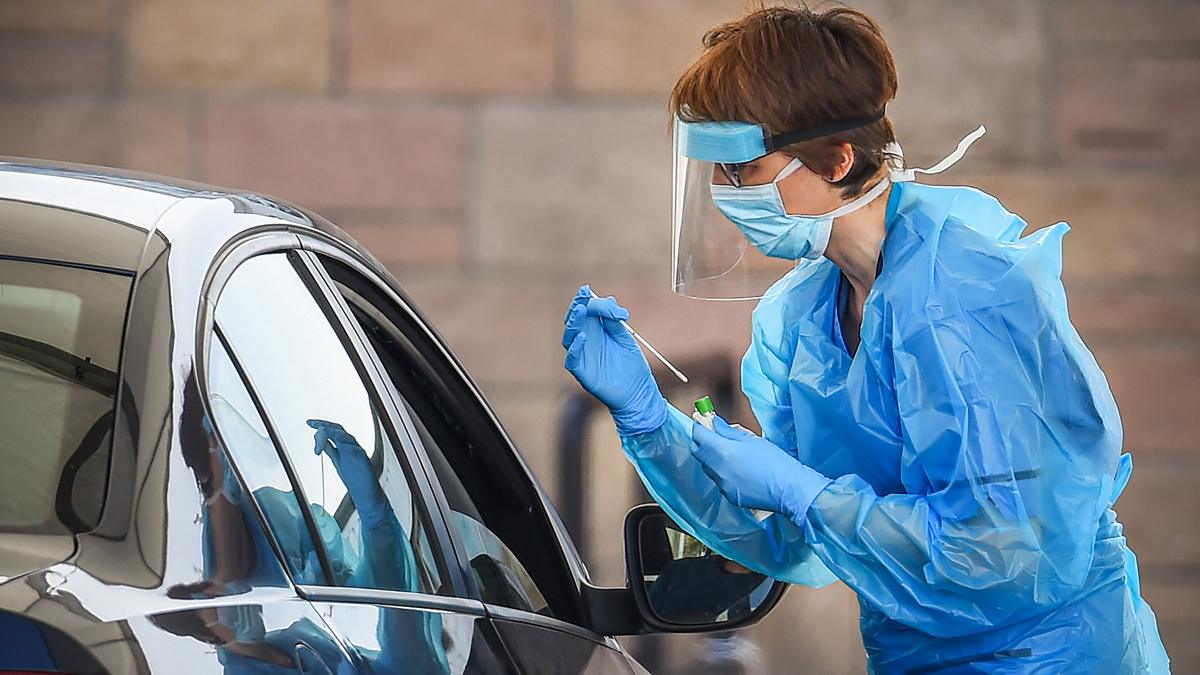
The UK government has set various targets during its efforts to tackle the coronavirus outbreak.
We have looked at ten of them including ones on testing, hospital beds and ventilators.
So, have they been met?
1. Having a contact-tracing app by the middle of May

"On the app, we're expecting that to be ready by the middle of May," - Health Secretary Matt Hancock, 28 April

Outcome:
Health Secretary Matt Hancock announced that there was to be an NHS contact-tracing app on 12 April. Later that month, he said that he was expecting it to be ready by the middle of May.
The idea of the app was that it would alert users if they had been in contact with somebody with coronavirus. It was intended to be part of Boris Johnson's "world-beating" test, track and trace operation.
Trials of the app began on the Isle of Wight in early May but it had not been rolled on in the rest of the country by the time the rest of the contact tracing system began on 28 May.
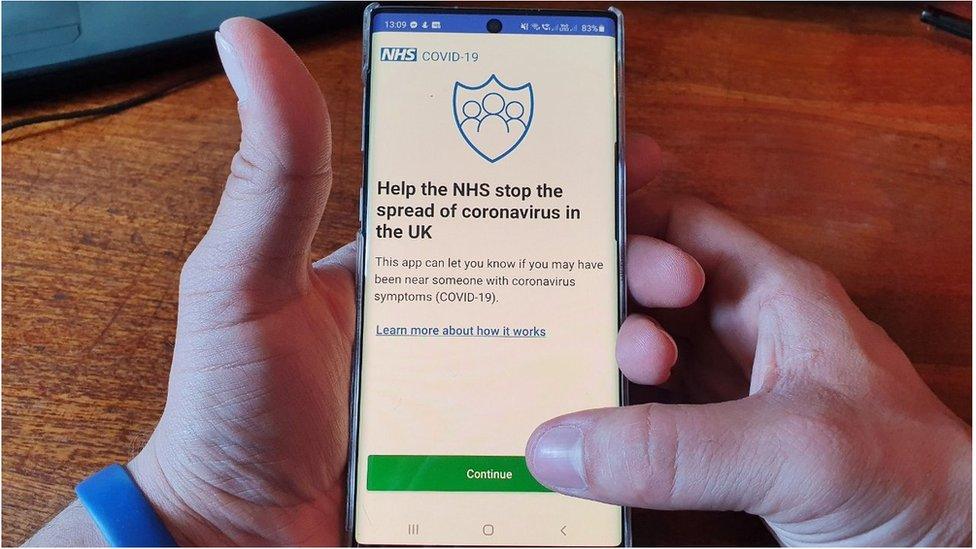
On 18 June, the government abandoned its app and decided to shift to a model based on technology provided by Apple and Google.
It is not clear when that app will be rolled out with contact tracing capabilities.

2. Getting test results back in 24 hours by the end of June

"I can undertake to him now to get all tests turned around in 24 hours by the end of June, except for difficulties with postal tests or insuperable problems like that," Boris Johnson, 27 May

Outcome:
The prime minister told the liaison committee in parliament that coronavirus test results would be received within 24 hours, except for those involving sending tests in the post, which would clearly take longer.
We do not yet have figures for the turnaround times until the end of June.
The latest data, external runs up to 24 June. It showed 24-hour turnaround performance of:
72% for 70 drive-thru centres, up from 19% at start of June
61% for 166 mobile units, up from 5% at start of June
22% for batches posted to care homes and 9% for home-test kits - although these processing times are affected by how quickly people use the tests.
Alongside these ways of testing, hospitals also test patients. More than nine in 10 of those are processed within 24 hours.

3. Providing 230,000 laptops for poor pupils by the end of June

"We said that they would all be distributed by the end of June and we are on target to do that," - Education Secretary Gavin Williamson, 9 June

Outcome:
In April the government announced it would provide free laptops, tablets and 4G wireless routers for disadvantaged children in England to enable them to access remote learning during the coronavirus pandemic.
The devices are available for care leavers, children with a social worker and disadvantaged Year 10 pupils.
On 9 June, Education Secretary Gavin Williamson told the House of Commons that 230,000 computers would be given out under the scheme by the end of the month.
Department for Education figures, external showed that as of 30 June 202,212 laptops and tablets had been delivered along with 47,416 4G wireless routers.
The statistics show that almost a quarter of laptops and tablets were delivered or dispatched in the last week of June, meaning that many children had waited more than two months from the announcement of the scheme to receive them.

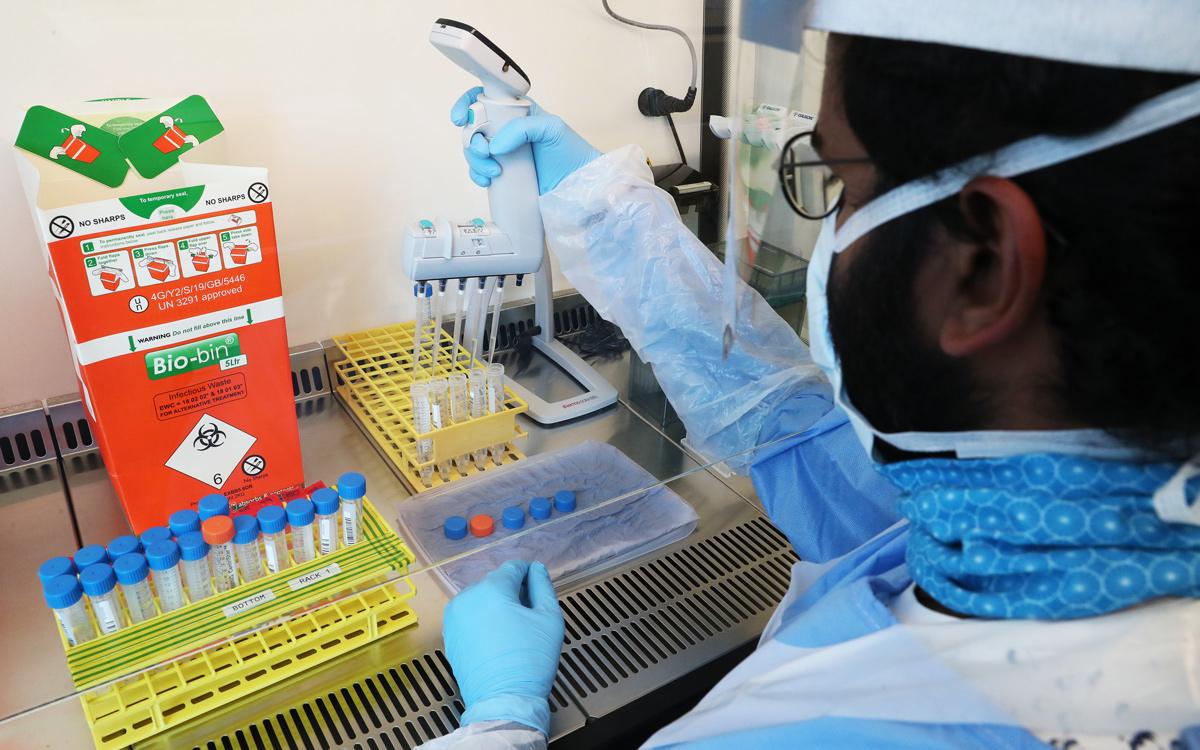
4. 25,000 tests a day by the middle of April

"We will massively scale up our testing capacity in the weeks ahead so we hit 25,000 tests a day" - Prime Minister Boris Johnson, 18 March

Outcome:
This was the first of several testing targets set by the government.
On the same day a press release from the Department of Health and Social Care, external (DHSC) gave more details of the tests to diagnose coronavirus and said "the increased capacity is expected to be ready within four weeks".
But the government did not hit 25,000 tests a day by mid-April. Only 18,665 tests were conducted in the UK (excluding Northern Ireland) on 15 April.
In terms of testing capacity - the amount of tests which could theoretically be carried out on any one day - that stood at more than 30,000 by mid-April.

5. 100,000 tests a day by the end of April

"I am now setting the goal of 100,000 tests per day by the end of this month" - Health Secretary Matt Hancock, 2 April

Outcome:
On 1 May, the government said it had reached the target and announced 122,347 tests for the last day of the month (30 April).
The testing figure had been averaging about 20,000 a day but increased significantly in the last days of April.
When home testing kits were introduced in large numbers towards the end of the month, DHSC began counting those sent out as part of its daily test figures.
So, it doesn't mean the test was actually used by someone on that day.
Previously, only instances in which the testing swab had been processed through a lab were counted as a test.
The 122,347 figure included about 40,000 kits sent out to homes and test centres.
Prof John Newton, who leads the government's testing programme, said on 1 May: "That's the way they are counted, have always been counted, and the way we were advised to count them by officials."
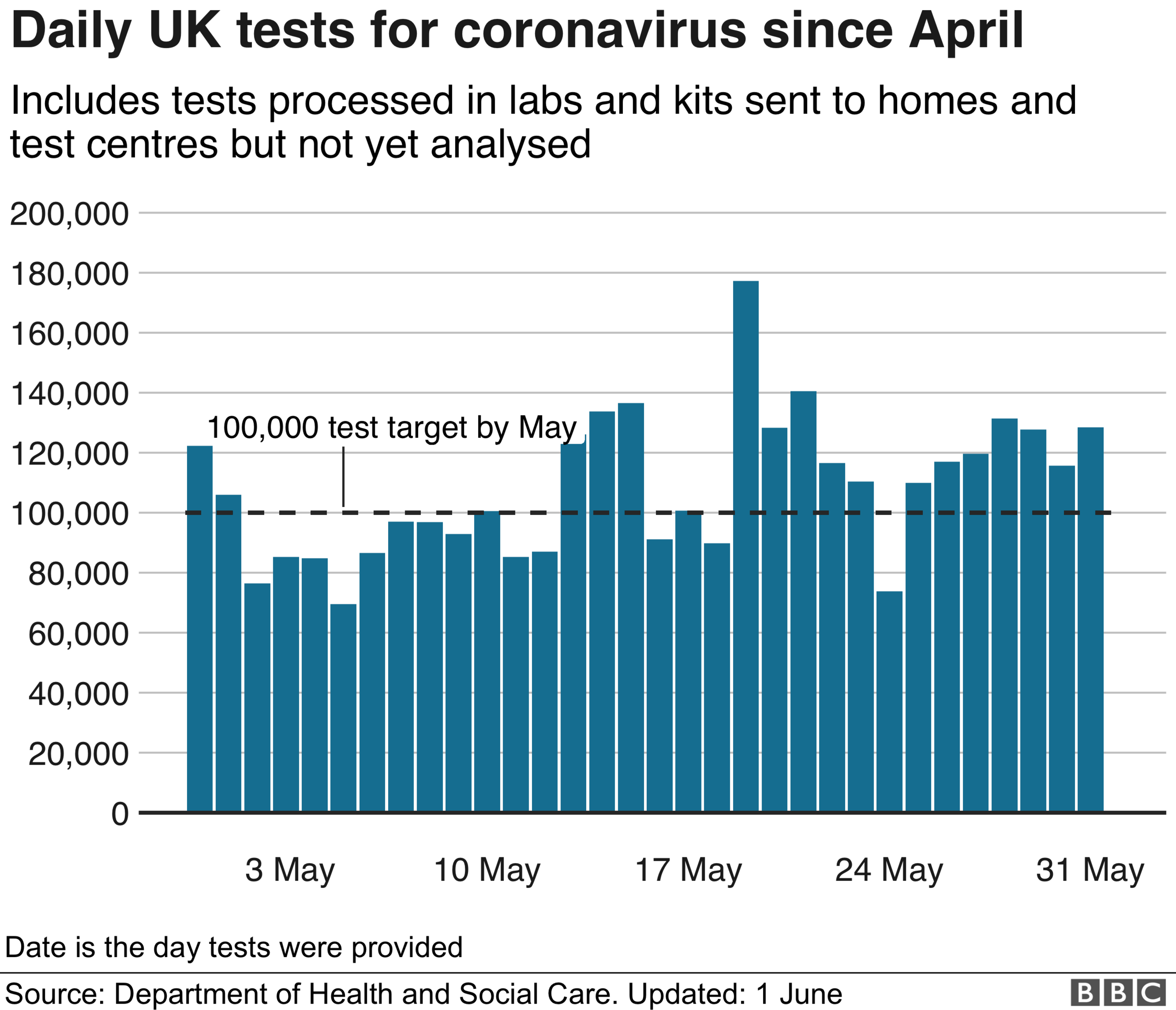
In a letter to Mr Hancock on 2 June, external, Sir David Norgrove, chair of statistical watchdog the UK Statistics Authority, was critical of this methodology.
"The aim seems to be to show the largest possible number of tests, even at the expense of understanding," he wrote.
The devolved administrations in Wales and Scotland also made pledges on coronavirus testing.
But Wales's health minister Vaughan Gething announced they were abandoning their promise of conducting 5,000 tests a day by mid-April, blaming problems obtaining testing kits.
Likewise, First Minister Nicola Sturgeon admitted at a press briefing on 23 April that Scotland was unlikely to achieve its original target of 10,000 tests per day by the end of April, saying "we are working towards a capacity of 3,500 by the end of April".
The Scottish Government announced at the beginning of May, external that it had reached this reduced target.

6. 200,000 tests per day by the end of May

"The ambition, clearly, is to get up to 200,000 a day by the end of this month, and then to go even higher" - Boris Johnson in Parliament 6 May

There had been some confusion as to whether the target for testing by the end of May was 200,000 tests conducted or a capacity to do this many tests.
Matt Hancock eventually clarified, external that it would be the capacity for tests, and that it would include antibody tests (which establish whether somebody previously had the virus) and tests being sent out to a random cross-section of society by statisticians, as well as those conducted on people actually displaying symptoms.
On 30 May, the DHSC announced that the UK had hit the target, with labs able to process 205,634 tests a day.
At 9am on 28 June, testing capacity, external was 294,258.
This included capacity to do 80,000 antibody tests a day. On 1 July they carried out 29,401 antibody tests.
When it comes to number of people actually tested for coronavirus on a daily basis, the government has not released this figure since 22 May. The DHSC says the number has been "temporarily paused."

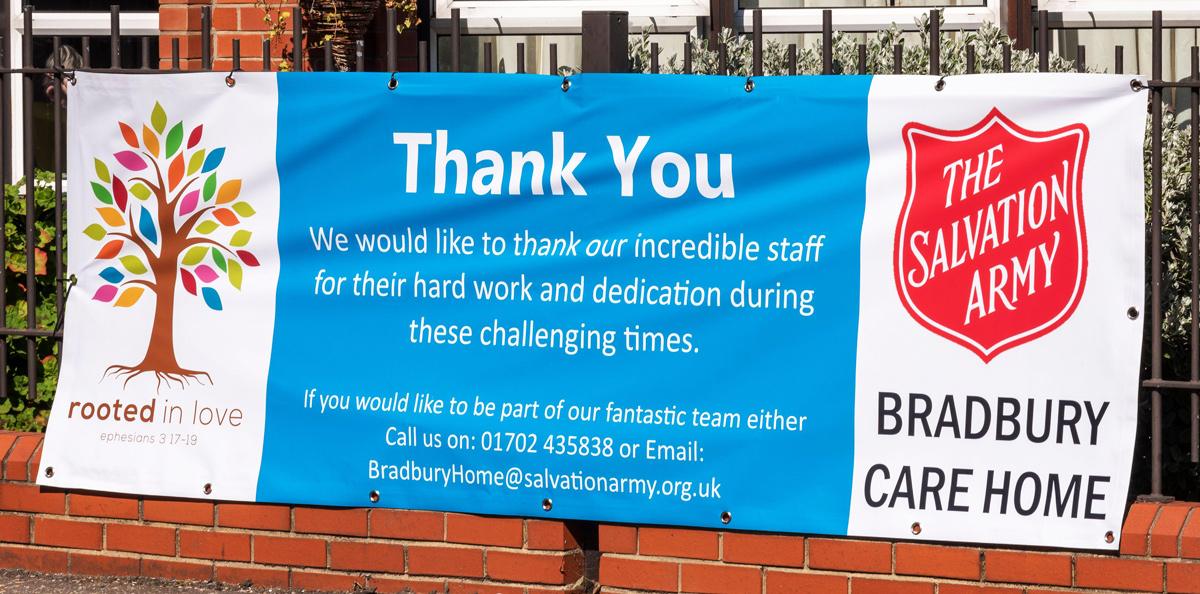
7. All care home staff and residents tested by 6 June

"We'll test every resident and every member of staff in our elderly care homes in England between now and early June" - Health Secretary Matt Hancock, daily briefing 15 May

Outcome:
On 7 June, the government said it had provided 1,071,103 test kits to 8,984 care homes. It said that meant that its target to provide test kits to every care home for elderly people by 6 June had been met.
But that wasn't how Mr Hancock described the target in May when he made it clear that every resident would be tested.
Test kits might not all have been returned for processing. The government has not said what proportion of the kits delivered have been returned.
Although the health secretary was clear that the target was to test every resident, the government's roadmap, external to releasing the lockdown did say "offered" tests.
The National Care Forum, which represents some not-for-profit care homes, had said that as of 2 June, 90% of the care homes they surveyed had been tested, external. However, they said that almost half of those had received null or inconclusive test results and a number were still waiting for results to return.
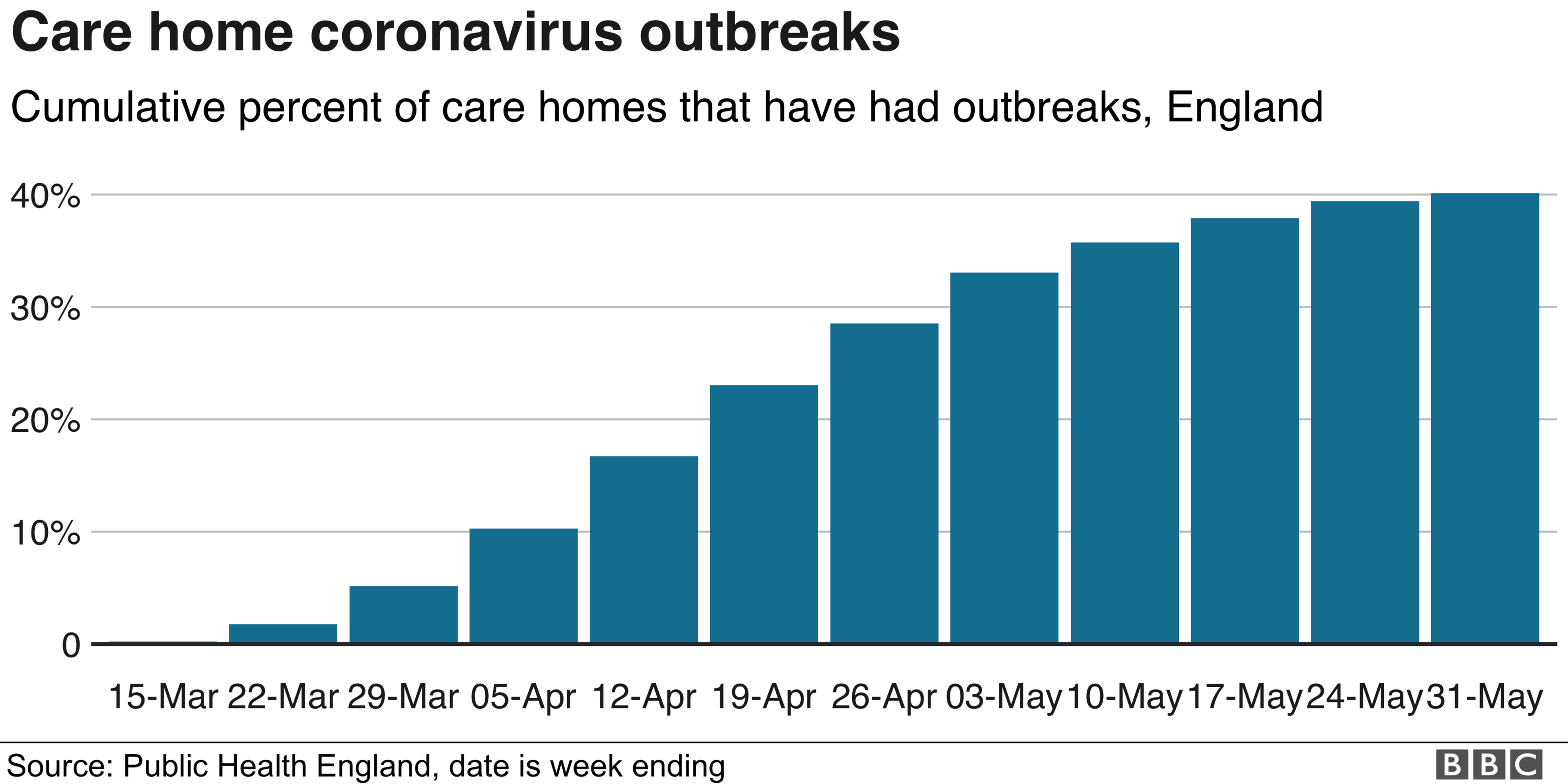

8. Recruiting 18,000 contact tracers by mid-May

"By mid May, we'll have an initial 18,000 contact tracers in place" - Matt Hancock, 1 May

Outcome:
On 1 May, Mr Hancock said that the government's testing programme was the "first element" in the wider strategy to "test, track and trace". He added that an "initial 18,000" contact tracing staff would be in place "by mid-May".
Their role is to identify individuals that have Covid-19 and then to "track and trace" anyone they've recently been in contact with. Those individuals can then get themselves tested.
On 18 May, Mr Hancock told Parliament that 21,000 contact tracers had been recruited in England, of whom 7,500 were healthcare professionals.


9. Increasing NHS capacity to meet demand

"Making sure that the NHS always has the capacity to treat patients is also mission critical" - Matt Hancock, 17 April

Outcome:
The government has met this objective.
It says that nobody in need of critical care has been unable to get it due to a lack of beds or equipment.
The proportion of critical care beds occupied by Covid-19 patients has been falling gradually since mid-April.
The spare capacity reflects the falling numbers of patients requiring intensive care treatment for the virus.
On 1 July there were 259 such beds occupied by coronavirus patients, down from a peak of over 3,200.

10. Providing the NHS with 18,000 ventilators

"Our goal, instead of the 30,000, is that we need 18,000 ventilators over the coming two weeks" - Matt Hancock, 5 April

Outcome:
The DHSC told the BBC that, by 5 May, the government had managed to make 10,900 mechanical ventilators available to the NHS across the UK. Mr Hancock's 18,000 target was for this type of ventilator, according to the DHSC.
The original UK target had been higher but was reduced, Mr Hancock said, because the lockdown and social distancing measures were working to slow the spread of the virus.
A spokesperson for the DHSC said: "Every patient who needs a ventilator has been able to receive this treatment and we are confident that there will be enough ventilators available for everyone who needs one. We continue to keep capacity ahead of demand."

This article has been updated to add targets and reflect the latest figures on testing and contact tracers.


